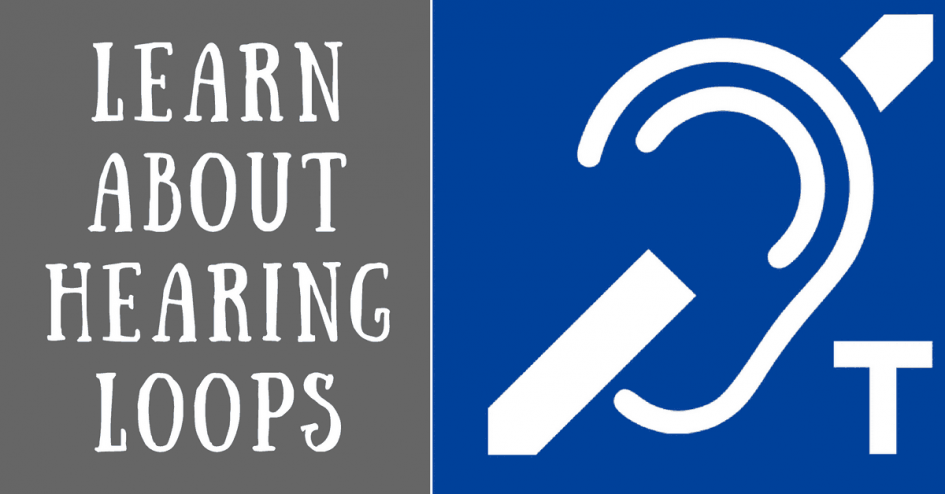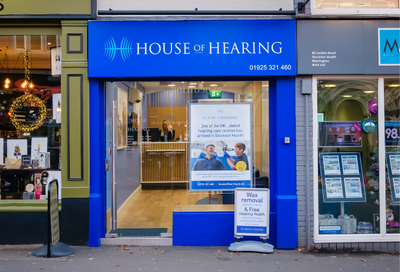
Learn About Hearing Loops
Living with hearing loss can be frustrating. You might find yourself at the corner shop’s counter wishing you could manifest a bubble around you and the clerk, just to eliminate background noise and make your conversation clearer. Hearing loops do almost exactly that. Hearing loops are a technology that successfully assists people with hearing loss in finding conversation clarity.
History of hearing loops
Appearing on the scene first in 1985, hearing loops have been around for quite some time. Also called an Induction Loop, this specialised technology is comprised of setting a wire loop around the identified area to isolate sounds within. The wire is connected to an induction loop amplifier, creating a magnetic field that sends the concentrated audio signals to the amplifier. The amplifier does exactly what it is supposed to do and amplifies the sound, ideally directly into the special receiver built into most hearing aids.
Takes all types
Hearing loop systems all work off the same premise, but they can look entirely different depending on their use scenario. For instance, a bank might use a series of hearing loops at each teller’s counter, in order to isolate solely the conversation between the customer and cashier. Same goes with the corner shop. These iterations are referred to as counter loops.
An office building might use a hearing loop in a conference room in order to ease listening effort for those with hearing loss in the classically challenging meeting environment. A theater might set the wire loop around the perimeter of the stage near the speakers so that audience members with hearing loss are not distracted from important stage sounds. These larger encompassing hearing loops are called perimeter induction loop systems and are perhaps the most commonly used.
The magic of hearing loops is that they can be altered to suit the chosen space. Unlike a hearing aid alone, which amplifies sound only within a radius of the wearer, hearing loops give a more precise and localised specification as to what sounds are prioritised.
Identifying hearing loop areas
When hearing loops are present to be utilized by those with hearing loss wearing hearing aids, a clear image is often found nearby to alert the public of its availability. Most often described as a diagonal line with an illustration of an ear in front of it, it is often accompanied by a ‘T’ symbol.
While this technology is in place intermittently, it can always use a boost. If there is a location you think would benefit greatly from a hearing loop, do inform the management. While hearing loss has received a larger focus recently than in the past, those with hearing loss have often learned to become their own best advocates.
Integrating into your hearing aid
All the guesswork is taken out of the equation for you. Simply switch the hearing aid to the telecoil (T) position and now you’re tuned into the sound amplified within the set hearing loop. Because the magnetic field is sturdy, those with this setting enacted on their hearing aids are able to move within the looped area and continue to have the selected sounds amplified into their devices.
Pinpointing potential problems
Of course, no technology is immune to a few snafus. Properties which house a number of hearing loops have reported problems of interference. This most commonly presents as overhearing conversations being streamed into your hearing aids that are actually occurring within another hearing loop. Certainly an annoyance, but also a busybody’s dream!
Absolutely for individual sale
Other than being a brilliant solve for public spaces, hearing loops work well for individual users, as well. This has all the benefits of commercial uses, but built into a convenient unit. These tidy packages include a microphone, loop cable and amplifier. Light and mobile, a portable hearing loop can be taken to wherever it’s needed. You can create that better hearing bubble at any time and place you wish! A night at the local with your pals just became much less of a muddle when your portable hearing loop gets placed on the table.
An individual unit is an investment at a few hundred pounds, but it’s well worth the cost when the terrific listening enhancing capabilities are taken into account.
Learn more about hearing loops here.
Wondering if your hearing aids have a telecoil to loop in for clearer sound? Visit us at House of Hearing. We offer hearing care and hearing aid fittings at five centres in Edinburgh, Galashiels, Perth, Morpeth, and St Andrews. Call us on 0131 220 1220 for more information.
Our Clinics
All House of Hearing clinics are in town centre locations and accessible to public transport and parking. Home visits also available if mobility is an issue.


.png)
.png)
.png)

.png)
